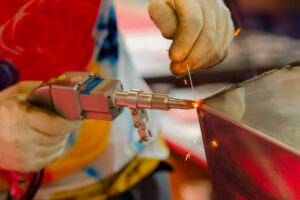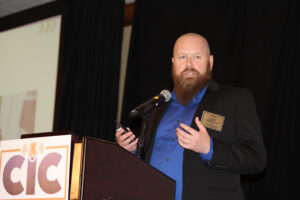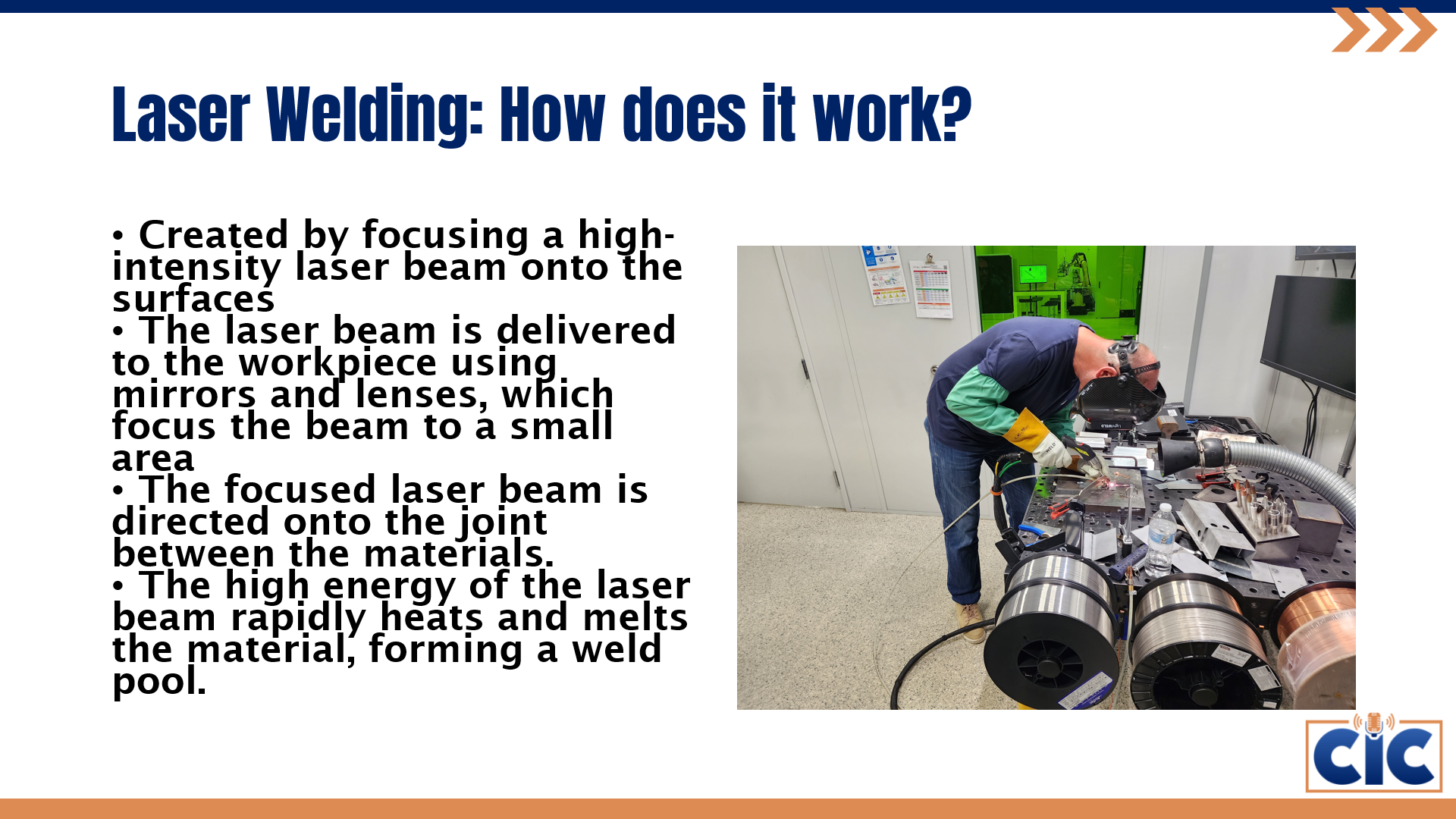
I-CAR explores viability of laser welding in collision repair
By onMarket Trends | Technology
I-CAR is looking into a new possibility for collision repair that they say could match factory-level welding.
Scott VanHulle, I-CAR repairability technical support and OEM technical relations manager, hit the high points of laser welding during a presentation at the Collision Industry Conference (CIC)’s April 17 meeting.
“Laser welding is something that we’ve been seeing from the OEMS for a number of years — laser-welded roofs, laser-braised roofs,” he said. “This is something that I think is going to be a game-changer in the industry.”
Welds are created by focusing a high-intensity laser beam onto surfaces, which is delivered using mirrors and lenses, rapidly heating and melting the material to form a weld pool, VanHulle said. Laser welding can be done with or without filler wire. It also operates by photons rather than electrons like in traditional welding, he said.
Laser welding can be used on steel, stainless steel, aluminum, copper, brass, nickel alloys, plastics, and titanium. There is also talk of possibly laser welding ceramics.
For example, on the door flange in the pinch weld area of Volkswagen and Audi vehicles, there are laser welds done in the factory, VanHulle said. Laser welds can be created in areas of vehicles with dissimilar materials, like laser-braised roofs, he added.
“You can do this without using a filler wire,” he said. “You’re not introducing different alloys and different things to worry about. If you have a lap joint, you can literally weld just on that very edge. You can have good fusion with a simple lap weld. You can do an open butt weld with it; whatever the repair calls for.
“The learning curve on it is substantially lower than traditional welding because you’re basically putting the gun on the material and dragging it along where you don’t have to worry about wire stick-out as much. It’s definitely something that we’re going to be keeping a very close eye on [for collision repairs] because welding really hasn’t changed since electricity became normal.”
Other advantages of laser welding, VanHulle said, include speed, precision, and virtually no warping compared to spot and MIG welding, which can vary by how the welder is set up and the technician who completes the welds.
“You can have drastically different heat effect zones and it can really change that repair,” he said. “You could be introducing damage into something if you’re using the wrong attachment method with all that heat. A laser welder can also be switched to clean the weld joint ahead of time.
“If we had a quarter panel, normally we would have to plug weld it because we didn’t have access. Now all of a sudden, we could basically do something similar that the factory did like a spot weld with only having one-sided access.”
Disadvantages of laser welding at this time, according to VanHulle, include it not being an OEM-approved repair method and easily damaged equipment. If the mirrors and lenses are smudged or damaged, it’s not a quick swap out of a contact tip.
There are also major safety risks. The laser can penetrate traditional welding helmets, such as by reflection of the laser beam while welding. That can burn a hole in a helmet that isn’t made for laser welding.
Laser welding also does permanent irreversible damage to eyes in seconds if safety glasses that are rated for it aren’t worn.
VanHulle said it’s also a good idea to have a room for laser welding, similar to aluminum clean rooms, that is locked off so someone can’t walk in and be injured by the laser beam. The room can also be set up so that when the door is opened, the welder is automatically shut down, he added.
Questions that VanHulle said I-CAR still needs answers to about laser welding are:
-
- How do we know it’s correctly done?
- Is it just set on the parameters in the welder?
- Is there any kind of destructive testing we have to do?
“This is just all of a sudden now coming into the realm of possibility and so there’s going to have to be a lot more work by a lot of people before it ever shows up in a collision shop,” he said. “I think this is coming faster than a lot of the AI technologies.
“It’s one of those things that we can see the potential that I think a lot of the [OEM] engineers haven’t really thought of because it wasn’t a possibility in the aftermarket repair facility to do something that they’re doing at the factory with the same kind of technology.”
Images
Featured image: Stock photo of a portable handheld laser welding machine being used. (Credit: Zyabich/iStock)
Laser welding presentation slide courtesy of CIC
Scott VanHulle speaks during the Collision Industry Conference April 17, 2024 meeting.

